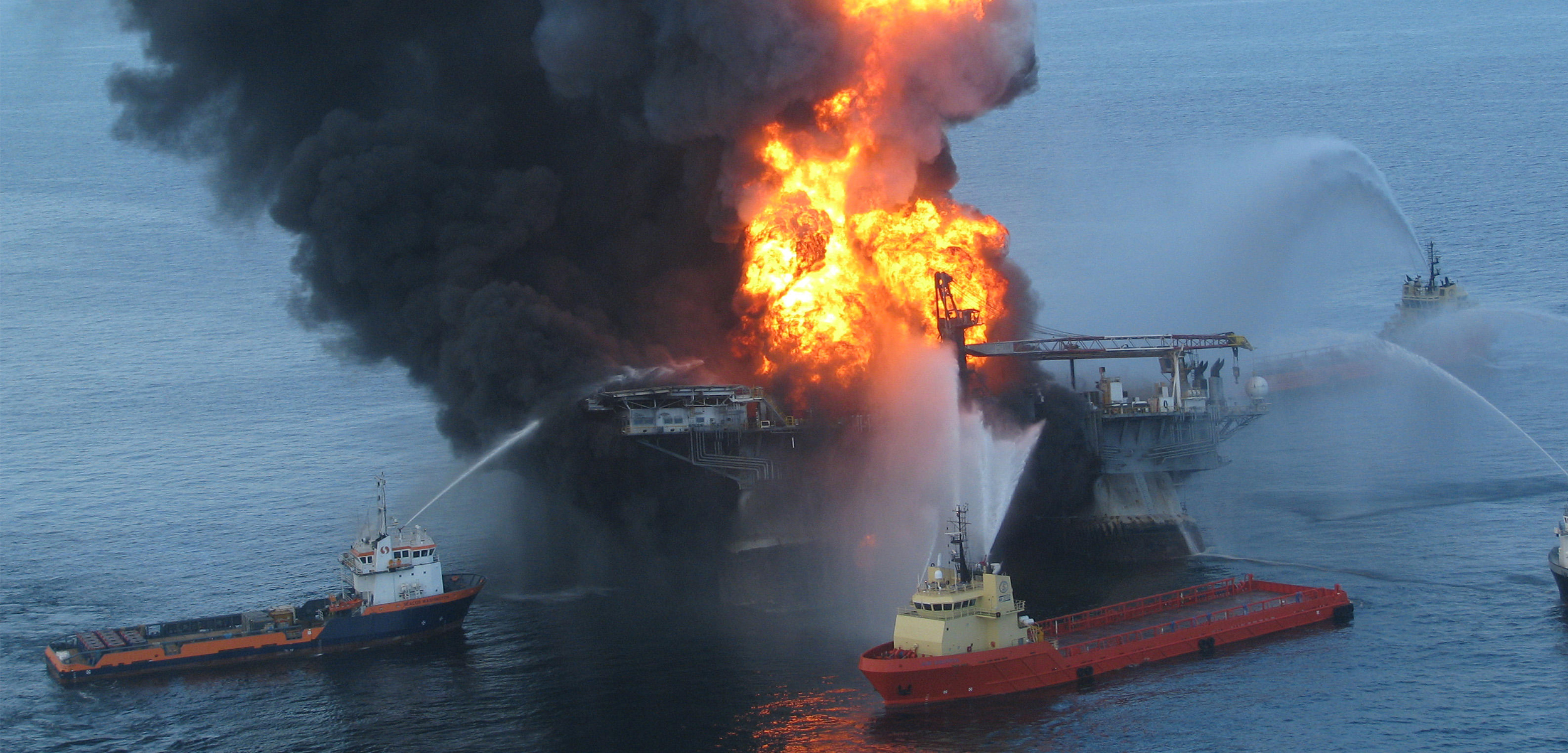The Deepwater Horizon’s Very Unhappy Anniversary
A recent scientific expedition to the Gulf of Mexico seafloor shows just how little things have improved near the broken well.
Article body copy
In March 2024, about a dozen scientists and crew members ventured into the Gulf of Mexico armed with an underwater rover, crab traps, and other research kit. Led by Craig McClain, a deep-sea biologist at the University of Louisiana at Lafayette, the team set out to study the site where, on April 20, 2010, the Deepwater Horizon oil rig exploded, killing 11 workers and setting off one of the worst environmental disasters in US history.
It was McClain’s third trip to the disaster’s ground zero, and despite the 14 years that have elapsed, he found that wildlife surrounding the exploded wellhead was still suffering. The absence of life is noticeable, says McClain, and what is there doesn’t seem healthy.
Unlike other wrecks, which tend to become habitats for marine species over time, the sunken Deepwater Horizon has remained comparatively sterile. Organisms that typically inhabit the Gulf’s seafloor—such as sea cucumbers, giant isopods, corals, and sea anemones—are simply missing, says McClain. Perhaps more concerning are the crabs. Naturally red, the crabs McClain and his team pulled up in their traps were tinted an oily black; many were also missing legs, while others had lesions.
When disaster first struck, scientists and locals couldn’t help but notice the mass die-offs of dolphins, pelicans, oysters, and other marine species. But as the years have rolled on, many of the remediation efforts meant to clean up the spill—which coated the Gulf in four million barrels of oil—have been focused on land.
“When we have a disaster like this,” says Mark Benfield, a Louisiana State University oceanographer and participant in the recent expedition, “it’s easy to look at the beautiful clear blue water—it was gorgeous out there—and say everything looks good.” On the seafloor, however, the improvements have been incremental at best.

In 2017, BP, the operator of the Deepwater Horizon, agreed to pay more than US $18-billion to Florida, Alabama, Mississippi, and Louisiana, which took the brunt of the oil spill’s damage. Photo by WDC Photos/Alamy Stock Photo
Although he was searching for life during the March expedition, Benfield’s attention was ensnared by the inanimate. Still lying upside down at the bottom of the Gulf with its metal twisted like taffy, the Deepwater Horizon rests where it collapsed into the sea. It looks like a war zone, Benfield says. Collecting on the wreckage are tiny scattered signs of new life, such as several types of anemones that Benfield spotted growing on one of the rig’s thrusters.
Benfield had visited the oil spill site before, including shortly after the explosion in 2010. He also joined the first scientific research expedition to the exploded wellhead in 2017. When Benfield saw the site then, he was shocked by how little it had recovered. Another seven years on, Benfield says researchers are slowly starting to see more animals. There’s “more diversity of fishes and macroinvertebrates,” he says. But compared with before the explosion, the site remains a desert, Benfield adds.
For those who embarked on the most recent expedition, the dire sight has them questioning how the Gulf will fare in the future. “We may not actually ever see recovery,” says McClain. Each trip to the wellhead comes with “a lot of mixed emotions,” he says. “It’s always sobering, no matter how productive the trip is.”

One of the Deepwater Horizon’s thrusters lies submerged in the Gulf of Mexico. A range of anemones have colonized the wreck—but not much else. Photo by Mark Benfield
It’s possible, says Erik Cordes, an ecological oceanographer at Temple University in Pennsylvania who has studied the Gulf oil spill site but didn’t join the expedition, that the Deepwater Horizon disaster caused more damage than nature can clean up.
“When you disturb an ecosystem, you change the abundance of species,” Cordes says. “The species that come back to that site—even after its so-called recovered—can be totally different than the species that were there beforehand. That’s what we’re seeing at this site,” he says. As for whether he thinks the Gulf will ever fully recover, Cordes says, “We don’t really know what the final outcome is going to be.”
Benfield has a slightly different perspective: “Time heals all things.” But the fallout at the bottom of the Gulf won’t heal during his life, he adds. “Maybe in my kid’s lifetime. But it’s going to take a long time, I think.”

